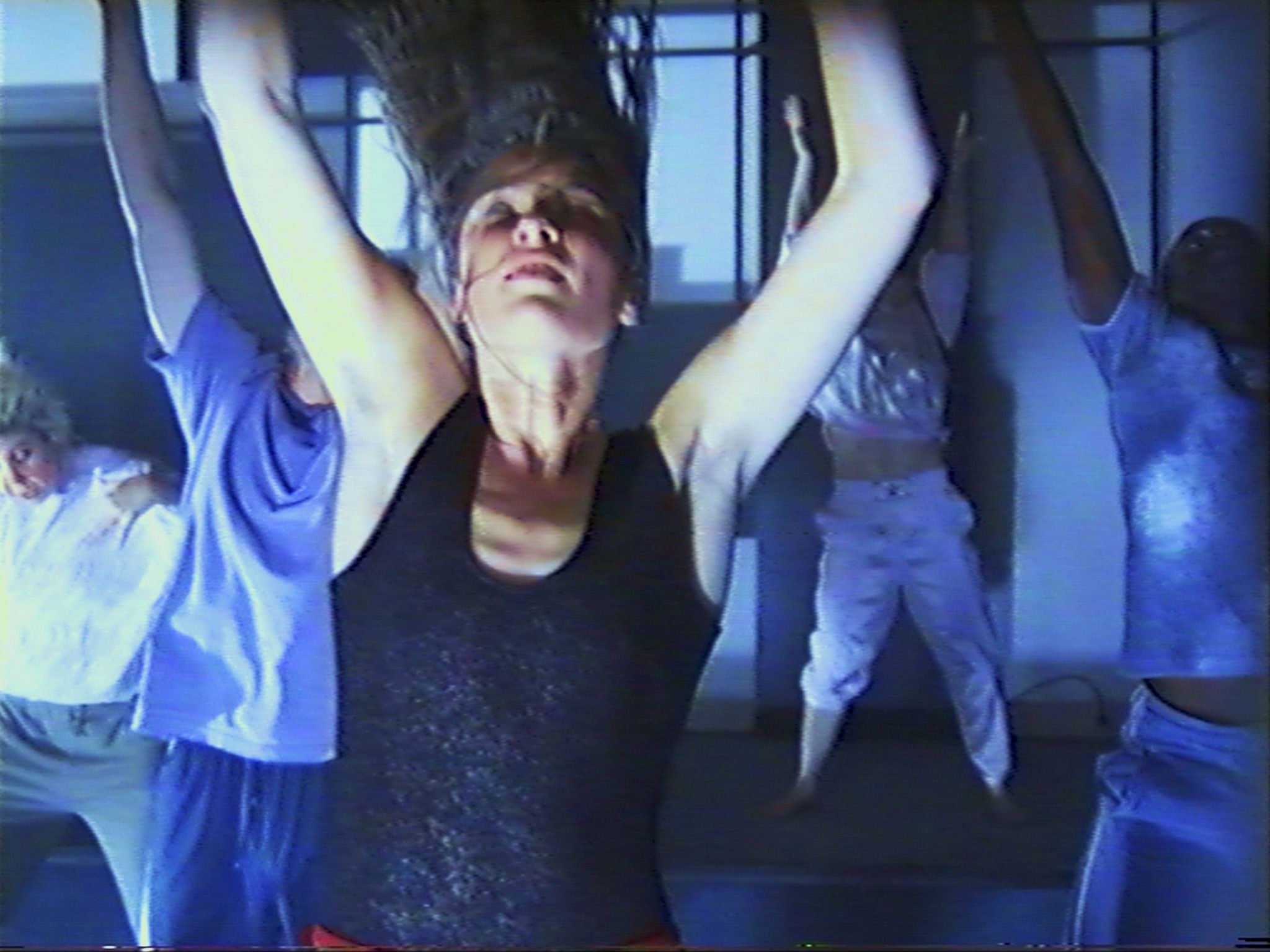Feel the Need to Believe: Artist JEREMY SHAW’s Film “Quickeners”
JEREMY SHAW’s work explores altered states and the cultural and scientific practices that aspire to transcendental experience. His most recent film, Quickeners, is currently on view at Johann König, Berlin. It reworks footage from the 1967 ethnographic documentary Holy Ghost People—which portrays a Pentecostal Christian sect in West Virginia and its practice of direct and personal experience of God through anointing, faith healing, speaking in tongues, and handling snakes—to create an entirely new narrative that takes place in a future of Quantum Humans neurologically linked to the Hive. The audio in Quickeners adopts the glossolalia of Pentecostalism, chopping up and rearranging the language and matching different words, or parts of words, to the way the worshipper’s mouths moved. It is an exquisite corpse of convinced magic and putative speaking of a natural language previously unknown to the speaker. 032c corresponded with Shaw about the film.

The film is reminiscent of Ken Russell’s work—something in between Altered States (1980) and The Devils (1971)—but also of the National Film Board’s expository documentaries of the 1950s and 60s. How much does cinema inform your work?
Ken Russell, and specifically Altered States, had a huge influence on me. I saw it for the first time on LSD when I was 16 or so and it’s stayed with me ever since—that alchemical mix of fiction, psychedelia, body-horror, and science-speak all show up in this piece in some way or other. Cinema in general is hugely informative in my work. As you mention, from psychedelic to ethnographic films, a lot of what I’m doing is rooted initially in its tropes and devices with a real fondness for the manipulative possibility of the cinematic experience.
Why choose to work with an outmoded form of documentary to portray what is ostensibly the future?
I find working with the recent past/outmoded media to be a disarming way to discuss the present and the future. I’ve done it before with various time-based mediums as well as with my public poster projects that reprint ads from the recent past and place them alongside contemporary advertising. The suspension of belief is stronger and more malleable when there is a prior connection with the subject at hand, or a specific time-reference and familiarity/comfort with the aesthetic of the material. When coupled with elements that then upset that assumed familiarity, the propositions around parallel/multiple/future realities become more visceral and surreal—or even more probable feeling.

Much of your work and the discussion around it has focused on altered states, either chemically or naturally induced. This supposes that there is also an “unaltered” state. How would you define the two, and what happens in the middle?
I don’t necessarily believe that there is an unaltered state. I think we are constantly navigating various degrees of alteration in our own realities and to be able to actually pin-point an “unaltered” moment would, at best, be an incredibly personal thing considering the millions of variables. In my work, I’ve been primarily interested in the active seeking out of altered states—the age-old human desire to transcend the body or time—as well as efforts made to explain or map the phenomena. Via drugs, dancing, religion, belief, the Internet, whatever you like—I’m into it. But it’s the actual conscious attempt to alter one’s own reality, whatever that is at that given moment in time, that interests me most.
The film takes place in the future—perhaps an alternate reality—where Quantum Humans connect to the Hive. Can the Hive be seen as an allegory of the Cloud?
Yes, for sure—The Hive, The Cloud, The Matrix, etc … a nebulous analogy to a neurally-connected race or time.

What role does technology and the Internet play in your idea of altered/unaltered states?
Technology, drugs especially, are one of the easier routes to achieving an altered state. The Internet of course has many ways to alter reality and its potential for this is growing much faster than chemical drugs, so it’s inevitably becoming more and more of a prominent factor.
In some ways this film is a culmination of the themes you’ve been working on over the past few years—altered states, religion and spirituality, and elements of dance even. Do you see your practice as having a cumulative aspect to it? Do your pieces speak to one another?
Yes, it’s definitely a culmination of many of my ideas from past works. Whether it’s an MRI mapping MDMA effects, someone deep in prayer, or someone doing whippets in their kitchen, it all occupies a similar space to me. Quickeners is the first time I’ve glued these elements together with a traditional narrative structure, so even the most disparate-seeming are now in direct dialogue. You can find many of the same things I’ve been working on for years translated into the language portion of the piece as well as the recurring physical aspects of worship, dancing, trance, etc.

Jeremy Shaw’s exhibition Quickeners is on view at Johann König, Berlin, until June 28, 2014.
Quickeners was co-produced by Johann König, Berlin, the British Columbia Arts Council and the Centre d’Art Contemporain Genève for the BIM 14, with the support of the Fmac, the FCAC and the MONA MUSEUM.
